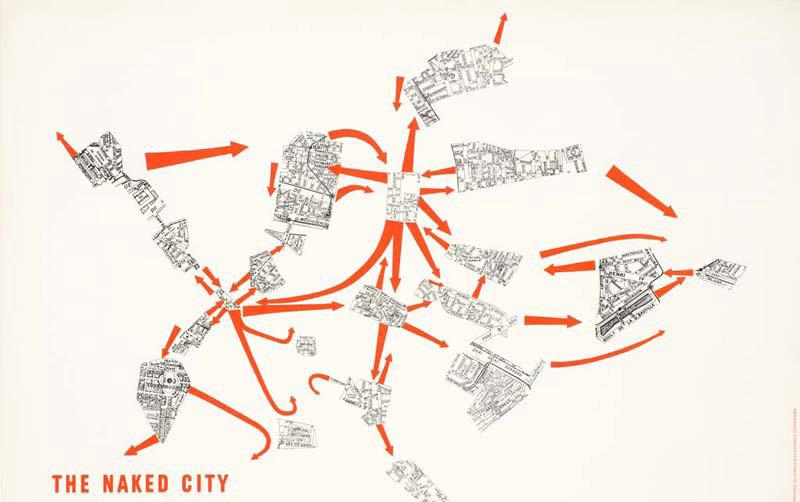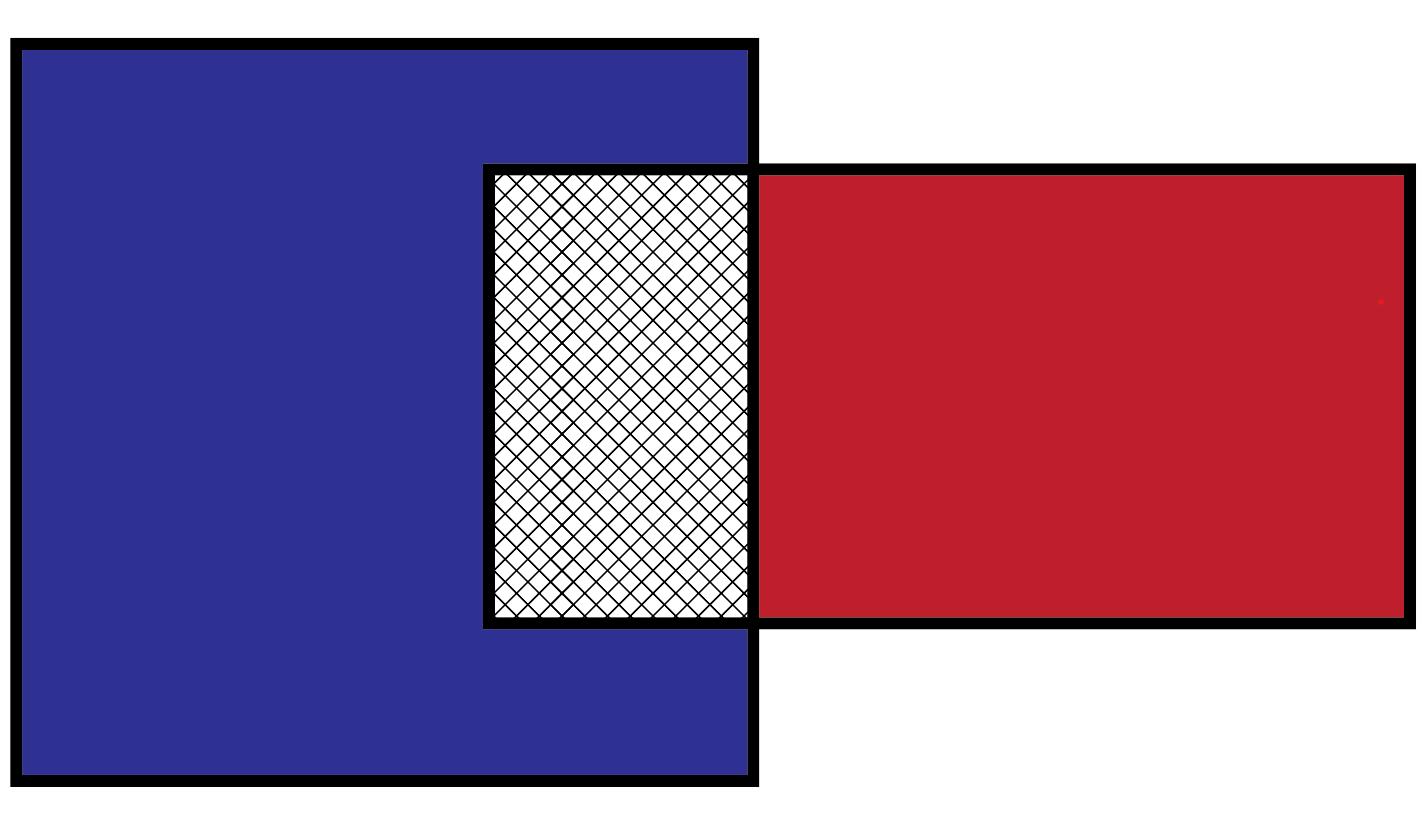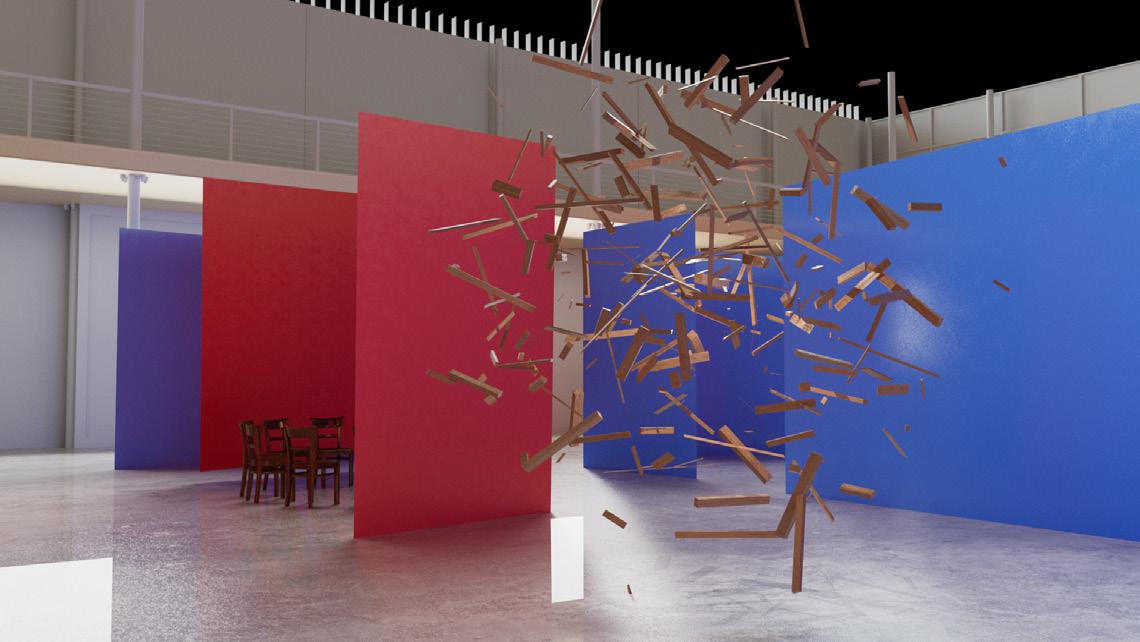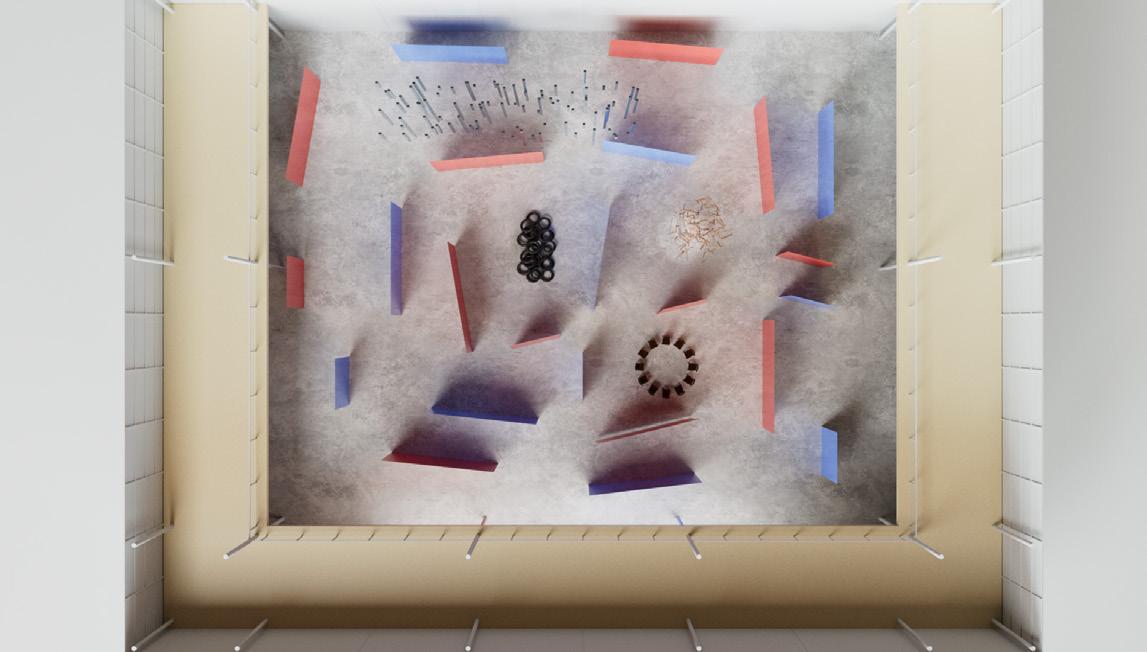
3 minute read
Another Look
Course Name: HT 2729
Instructor: Mimi Zeiger
Advertisement
In Collaboration with: Joy Chen + Zou Mange + Farmer-George Zarina
Inspired by China Miéville’s The City and The City, our exhibition, Another Look, targets the ever growing disparity in wealth and living conditions of people living within close proximity of one another and forces the public to take another look and see the city as a whole, unfiltered.
In the novel the City and the City, China Mieveille talks about two cities Beszel and Ul Qoma that shares the same location yet each city’s citizens are strictly forbidden to see the other city’s buildings and people. Citizens are trained at a young age to blur out regions of the city landscape that belong to the other city. One of the essential terms are Total, Alternative, and Crosshatch.

Total: What we see. Within one’s own city.
Alternative: What we unsee. Belonging to the other city.
Crosshatch: Overlapping spaces in between two cities.

Inspired by China Miéville’s The City and The City, our exhibition, Another Look, targets the ever growing disparity in wealth and living conditions of people living within close proximity of one another and forces the public to take another look and see the city as a whole, unfiltered. It is our hope that by seeing the city as a whole, we can gain compassion and use technology to improve the living conditions of the ones left behind by society. With the technological bloom of the 21st century we have used technology to achieve unfathomable things, making our lives ever more comfortable and tailored to our own preference. We can now filter and select what we want to see on the internet with the YouTube algorithm. What we are exposed to are also regulated by online censorships by corporations or government agencies. This is also the case in the real world where we choose not to see or act upon what right in-front of us because it is inconvenient to do so. Contemplating about the future living conditions, we hope to reverse this phenomenon.
Using the effect of psychogeography, the effect of a geographical location on the emotions and behaviors of individuals, the exhibit strategically places artworks and architecture projects that reflect upon class disparity into the space to create diverse route possibilities for the public to interact with in a form of a miniature city. With a simple blue and red tag on each project, the public are instructed to navigate through the city only by interacting with projects with one of colors. Depending on the region each individual interacts with, the city invokes emotions to the person as “total”, belonging to the city, “alter”, belonging to the other city, and “cross hatched,” belonging to both of the cities. After navigating through the projects, the public are guided to the second floor where they will have a clear sight of the entire exhibition space. Taking in the whole city into view and are now allowed to explore or take “another look” through the exhibition space with a new gained perspective.

“The future is already here – it’s just not evenly distributed.” Will we continue to choose to “unsee” or decide to recognize the disparities within our cities and build a better future together?

Exhibition Artwork Selections

The following are artworks that we have selected for our Another Look Exhibition. We thought these can represent class disparity and provoke the thought for future living typologies.

In downtown Los Angeles, two cities are colliding within a single street. While the left side of the street is residential units, the right side is filled with street vendors and small shops.
Lightweave is a two million dollar art installation over an homeless encampment. Homeless people were dislodged during the installation process but were quick to come back after. An example of two worlds that neglect each other.
Hostile Architecture refers to the practice of creating obstacles in design that deter a certain group of people from existing in a space.
The story of the Hunger Games depicts to us a world where people are divided up between wealthy and poor. The people in control and the controlled.

The story of Elysium depicts a world where the accessibility to technology and medication varies significantly due to wealth and poverty.

To this day, the Watts Towers symbolize freedom, creativity, and initiative for the local African-American and Latino communities and beyond.

Geographies of Fiction
Course Name: LA 8520
Instructor: Liam Young
Geographies of Fiction is a course that explores our perception of the world through stories. Through touring landscapes of video games, graphic novels, journalism and films we explore relationship between site and story, geography and the imaginary. For the final project, we created our own geography of fiction in the form of an island.









